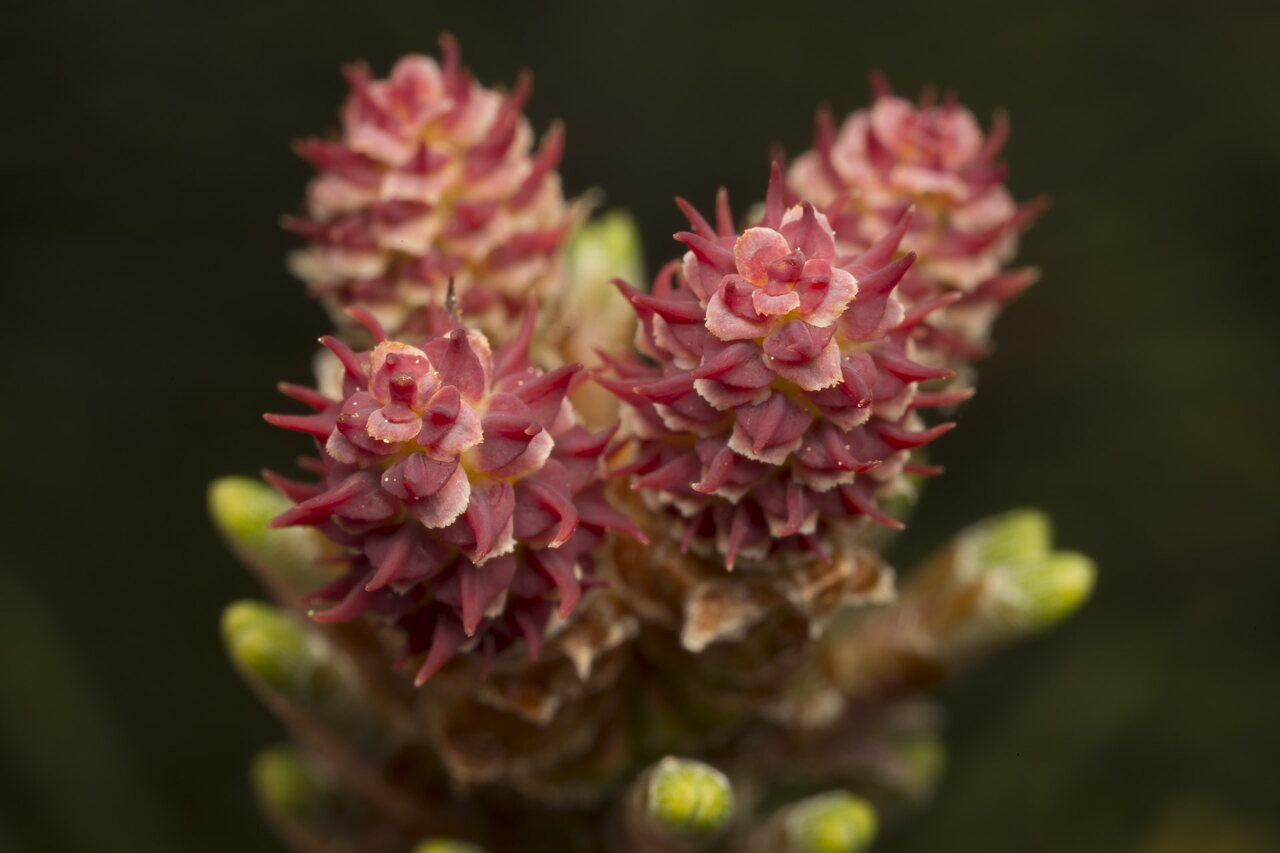
Pinus mugo · kalninė pušis
- dwarf mountain pine, scrub mountain pine, Swiss mountain pine
- Bjerg-fyr, Dorothealilje, Pinselilje
- Berg-Kiefer, Berg-Foehre, Latsche, Krummholzkiefer, Latschenkiefer
- kalninė pušis
- kalnu priede
- kosodrzewina, sosna górska, kosówka właściwa
Pinus mugo is native to the subalpine zones of the Pyrenees, Alps, Ore Mountains, Carpathians, northern and central Apennines, and higher Balkan Peninsula. It is usually found from 1,000–2,200 m, occasionally as low as 200 m (656 ft) in the north of the range in Germany and Poland, and as high as 2,700 m (8,858 ft) in the south of the range in Bulgaria and the Pyrenees. Also in Kosovo it is found in Bjeshkët e Nemuna National Park.[citation needed] In Scandinavia, Finland and the Baltic region, P. mugo was introduced in the late 1700s and the 1800s, when it was planted in coastal regions for sand dune stabilization, and later as ornamental plants around residences. In Denmark, Norway and Sweden, the species has naturalised and become invasive, displacing fragile dune and dune heath habitats. In Estonia and Lithuania P. mugo only occasionally naturalises outside plantations, sometimes establishing in raised bogs.
Natūraliai auga Vidurio ir Rytų Europos kalnuose: Pirėnuose, Apeninuose, Alpėse, Rūdiniuose kalnuose, Tatruose, Balkanuose. Priklausomai nuo geografinės padėties, auga nuo 200 iki 2700 m ar aukščiau. IX a. pradžioje Pinus mugo buvo atvežta į Pietvakarių Lietuvą. Čia buvo apsodinta Kuršių nerija siekiant stabilizuoti smėlį ir stabdyti kopų pustymą. Vėliau šios pušys pradėtos sodinti kaip dekoratyviniai augalai aplink gyvenamąsias vietas.
‥